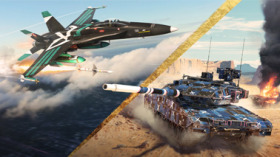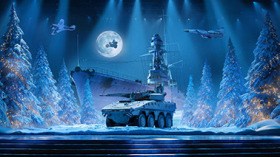
- For PC
- For MAC
- For Linux
- OS: Windows 10 (64 bit)
- Processor: Dual-Core 2.2 GHz
- Memory: 4GB
- Video Card: DirectX 11 level video card: AMD Radeon 77XX / NVIDIA GeForce GTX 660. The minimum supported resolution for the game is 720p.
- Network: Broadband Internet connection
- Hard Drive: 22.1 GB (Minimal client)
- OS: Windows 10/11 (64 bit)
- Processor: Intel Core i5 or Ryzen 5 3600 and better
- Memory: 16 GB and more
- Video Card: DirectX 11 level video card or higher and drivers: Nvidia GeForce 1060 and higher, Radeon RX 570 and higher
- Network: Broadband Internet connection
- Hard Drive: 62.2 GB (Full client)
- OS: Mac OS Big Sur 11.0 or newer
- Processor: Core i5, minimum 2.2GHz (Intel Xeon is not supported)
- Memory: 6 GB
- Video Card: Intel Iris Pro 5200 (Mac), or analog from AMD/Nvidia for Mac. Minimum supported resolution for the game is 720p with Metal support.
- Network: Broadband Internet connection
- Hard Drive: 22.1 GB (Minimal client)
- OS: Mac OS Big Sur 11.0 or newer
- Processor: Core i7 (Intel Xeon is not supported)
- Memory: 8 GB
- Video Card: Radeon Vega II or higher with Metal support.
- Network: Broadband Internet connection
- Hard Drive: 62.2 GB (Full client)
- OS: Most modern 64bit Linux distributions
- Processor: Dual-Core 2.4 GHz
- Memory: 4 GB
- Video Card: NVIDIA 660 with latest proprietary drivers (not older than 6 months) / similar AMD with latest proprietary drivers (not older than 6 months; the minimum supported resolution for the game is 720p) with Vulkan support.
- Network: Broadband Internet connection
- Hard Drive: 22.1 GB (Minimal client)
- OS: Ubuntu 20.04 64bit
- Processor: Intel Core i7
- Memory: 16 GB
- Video Card: NVIDIA 1060 with latest proprietary drivers (not older than 6 months) / similar AMD (Radeon RX 570) with latest proprietary drivers (not older than 6 months) with Vulkan support.
- Network: Broadband Internet connection
- Hard Drive: 62.2 GB (Full client)
Course Photo of mechanics of 18 Flight, 3 Wing - August 1942
Aviation history is littered with examples of outstanding achievements occurring through the ability to adapt, improvise and overcome. However, it is a hard and fast rule that aviation cannot take place safely and efficiently without skilled ground crews and maintainers. Often the unsung heroes of any nation’s aviation community, ground crews have worked tirelessly and resolutely in the face of a multitude of dangers: whether it be within earshot of tank battles on the Eastern Front, under constant fire and bombardment from enemy aircraft in the sands of North Africa or in the cramped confines of an escort carrier’s hangar in an overnight storm in the seas of the Arctic. Whilst ‘ground crew’ is a very broad term and covers a multitude of vital tasks, the purpose of this article is to concentrate on mechanics and maintainers.
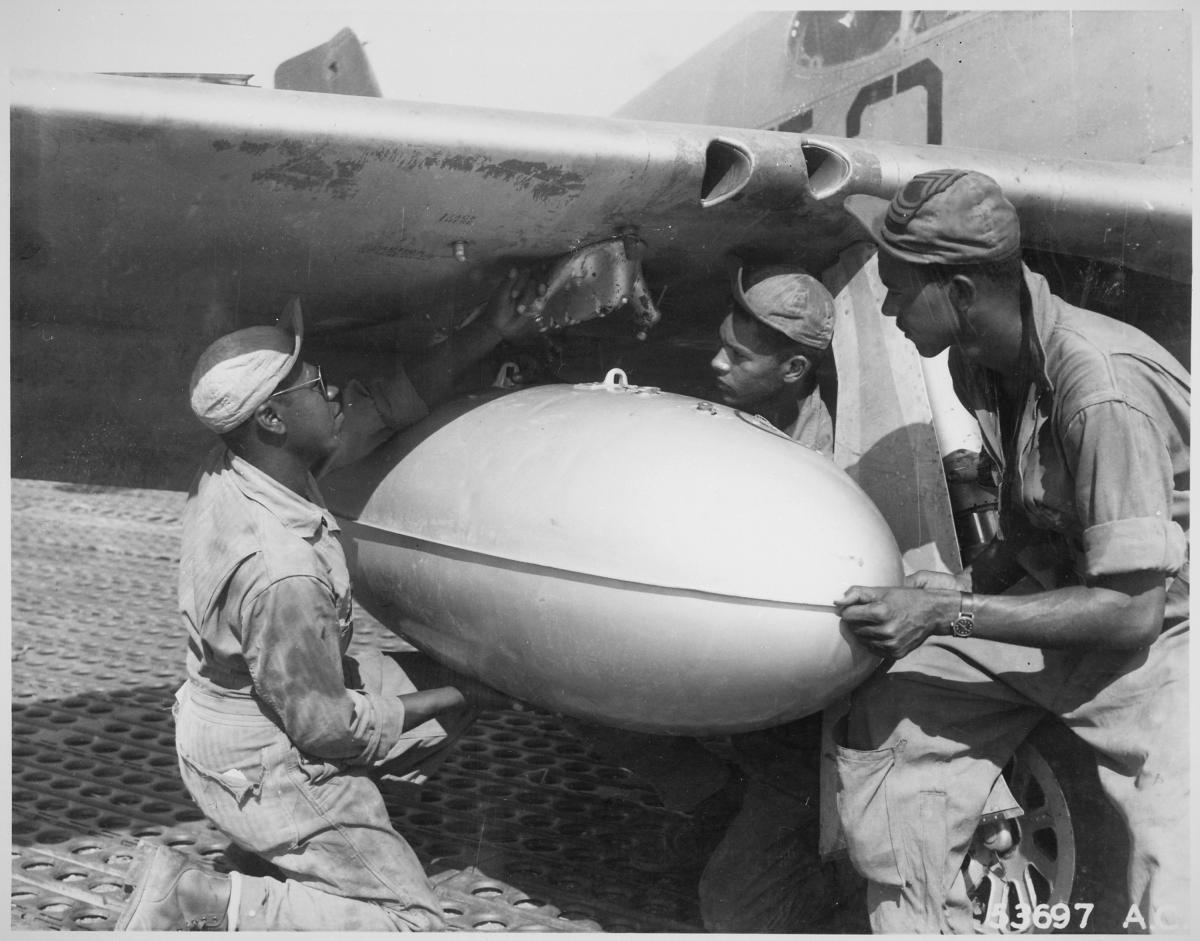 |
| Ground crews of the USAAF 15th Air Force at work on a P51 in Italy. |
All aircraft need regular maintenance; the practices in place in the modern day military aviation environment have many striking similarities to the procedures already implemented by the time of the Second World War. Even if undamaged by the enemy, aircraft parts are ‘life-exed’: depending on the aircraft and the individual parts, certain components will be replaced after flying a certain number of hours. In addition to this, aircraft have a scheduled maintenance package. For example, a specific aircraft may be pulled from flying every 25 or 30 hours for a series of checks; a more detailed examination taking more time may occur every 100 flying hours. Only under the most extreme conditions would these maintenance procedures be neglected and even then, unless the airfield was under immediate attack, paperwork would be required to forego the normal routines.
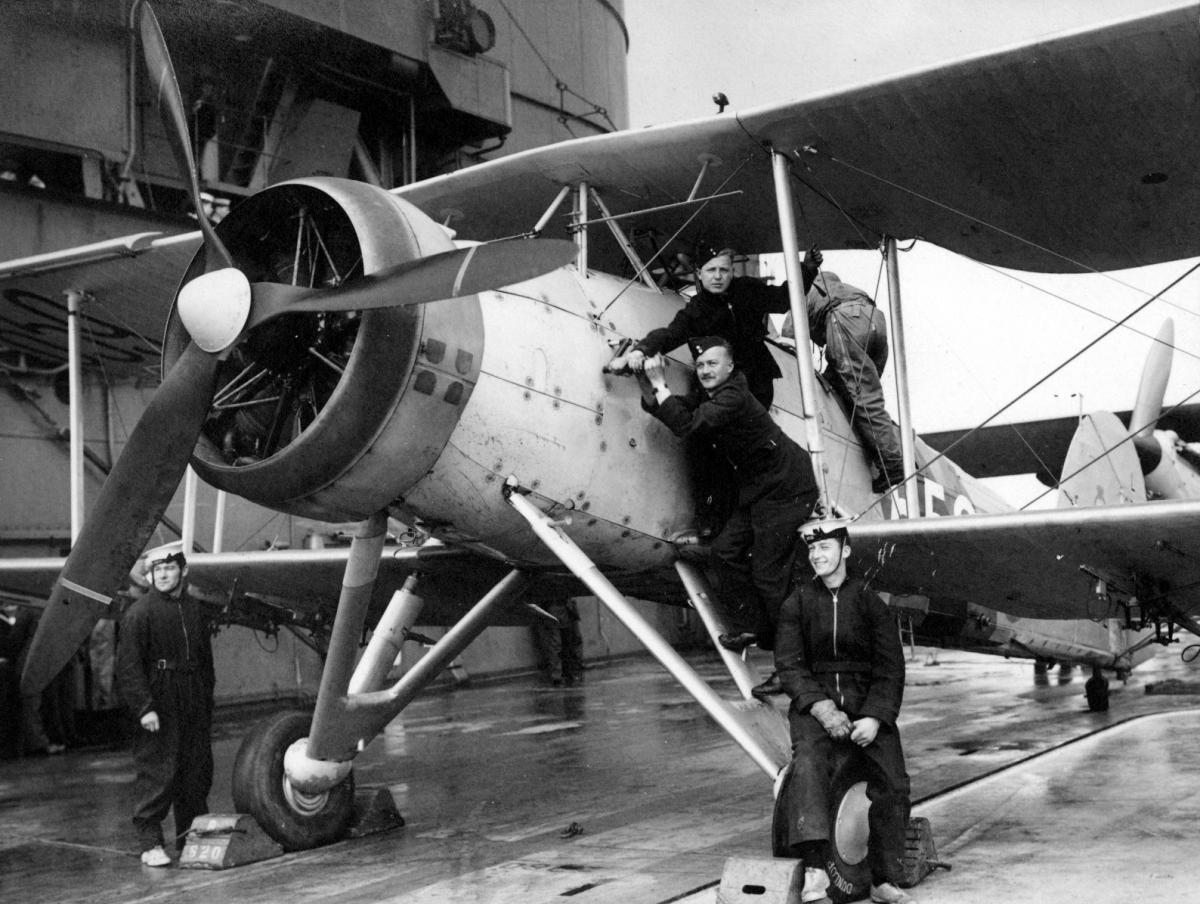 |
|
Fleet Air Arm and RAF mechanics at work on a Swordfish aboard HMS Ark Royal, pre-war |
In terms of recruitment and training, ground crews varied as much nation by nation as any other branch of the armed forces. Beginning with the British Royal Navy’s Fleet Air Arm as an example, the RN used a two-tier approach for mechanics across all specialisations of the navy, and the Fleet Air Arm was no exception. The bulk of personnel were made up by the Naval Air Mechanic branch, whilst a higher level of qualification was provided by the Artificer branch.
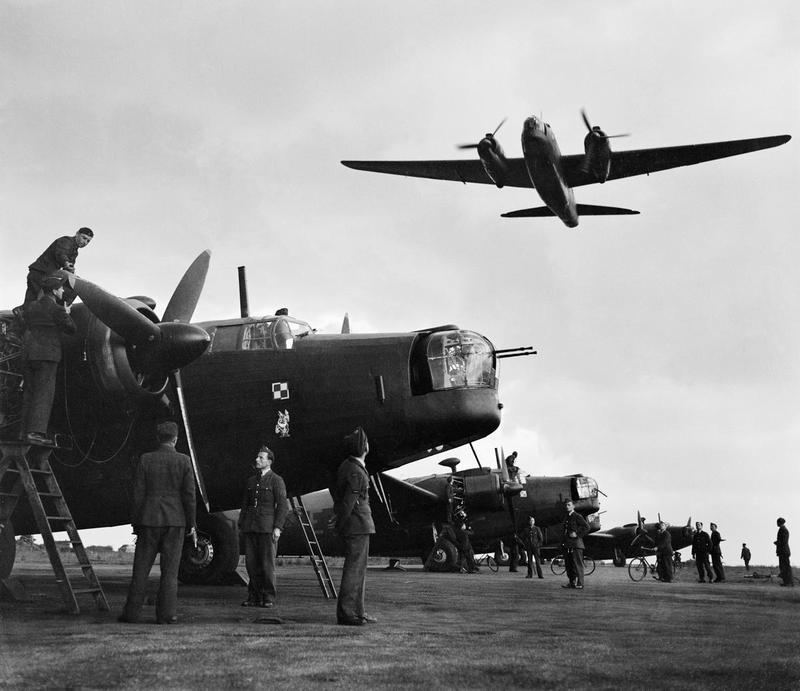 |
|
Polish ground crews at work on a Wellington of No.300 (Polish) Squadron, RAF |
Naval Air Mechanics first completed five weeks’ training which was generic to all rating (non commissioned) branches of the Royal Navy. After this, NAMs were divided into one of four further specialisations: engine, electrical, ordnance or airframes. The Fleet Air Arm copied the RAF example of referring to engine and airframe specialists as ‘fitters’ and ‘riggers’ respectively. The full training process of a NAM typically took approximately one year. No specialist training was given on specific aircraft types until later in the war; maintainers were expected to learn and adapt to whatever their squadron was equipped with.
Artificers, or ‘tiffs’ colloquially, had either served an apprenticeship, typically alongside their air force equivalents at RAF Halton, or were already part of the Royal Naval Reserve with similar trades brought across from civilian life. Exams in science and mathematics had to be passed as a pre-requisite, and promotion to Senior Rating was a much quicker process. Training was also much longer; nine months common training followed by two years trade training; this was still a year less than during peace time.
For the RAF, Lord Trenchard had initiated an apprenticeship scheme in 1920 which saw boys in between the ages of 15 and 17 ½ competing against each other in a series of exams to be accepted as air force apprentices. Training was three years in peacetime, but this was reduced to two years during the Second World War by increasing the length of the working day. Known as ‘Trenchard Brats,’ some 40% would go on to achieve commissioned rank.
On a front line unit, mechanics were normally split into watches but commanded at squadron level by an AEO – Air Engineering Officer (or simply ‘EO’ in some services and nations). Rank again varied by nation, but in the British RAF and Fleet Air Arm the AEO was typically a Lieutenant/Flight Lieutenant or Lieutenant Commander/Squadron Leader; so either held the same rank as a Flight Commander or the CO himself. Many AEOs were promoted through the ranks and had started life as a non-commissioned mechanic, and so knew exactly who they were leading and what was expected of them. Different engineering tasks required different levels of authorisation, and it could often fall on the AEO himself to make the decision, sign for, and accept the responsibilities of sending an aircraft on operations if still carrying an un-remedied fault or overdue a service.
Many post war books, movies and various multi-media products have concentrated heavily on military pilots; second to this, other aircrew branches are often featured but the vital role of the mechanic is sadly often overlooked. Without these highly trained, tireless and skilled individuals who often braved the same threats from the enemy as the aircrew they supported, aviation simply would not have been possible to sustain.
About The Author - Mark Barber, War Thunder Historical Consultant
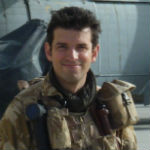
Mark Barber is a pilot in the British Royal Navy's Fleet Air Arm. His first book was published by Osprey Publishing in 2008; subsequently, he has written several more titles for Osprey and has also published articles for several magazines, including the UK's top selling aviation magazine 'FlyPast'. His main areas of interest are British Naval Aviation in the First and Second World Wars and RAF Fighter Command in the Second World War. He currently works with Gaijin Entertainment as a Historical Consultant, helping to run the Historical Section of the War Thunder forums and heading up the Ace of the Month series.



